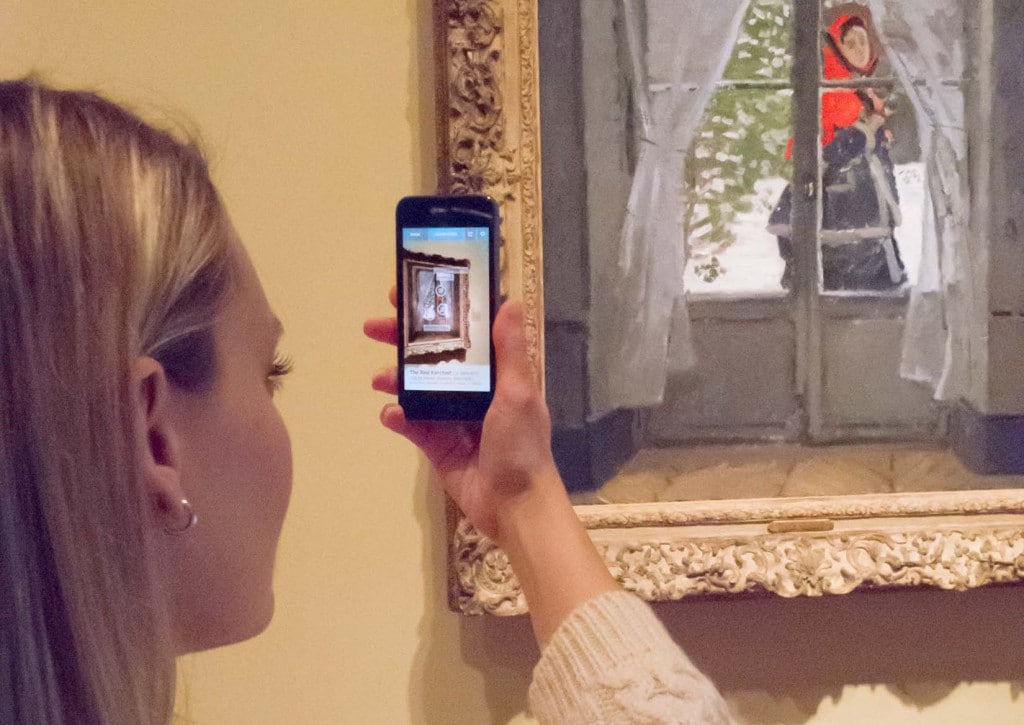With their groundbreaking app ArtLens, the Cleveland Museum of Art is changing the way that we use technology to experience the world around us. While their app is stunning, it’s the result of a clearly defined vision and carefully wrought execution—the first of which we’ll examine in this two-part article.

Photo courtesy of the Cleveland Museum of Art (modified)
| “We needed to redefine how digital and physical can work together within a museum,” said Jane Alexander, CIO of the Cleveland Museum of Art. “We wanted to personalize the museum experience.” |
Of all the tools we use on a daily basis, the mobile phone is probably taken for granted most often.
It’s not like that statement is exactly Earth-shattering. In fact, more people have access to cell phones than they do to working toilets. And apart from the ability to communicate with anyone, anywhere, at anytime, mobile apps have given us the convenience of computing on the go, revolutionizing the way that we interact with technology in our daily lives.
But you already knew all that.
What you might not realize is that we download so many apps that we wind up abandoning 95% of them every month. The truth is that the vast majority of mobile apps are afterthoughts, oftentimes lacking the clarity of vision or user interface to truly be useful in a mobile environment. And while mobile technology has the capacity to change the very way we experience the world around us, it’s rare for us to find an app that truly manages to combine such a progressive vision with seamless execution.
So when it came time for Jane Alexander, CIO of the Cleveland Museum of Art, to oversee the development of the museum’s mobile app, none of this was lost on her.
Alexander helmed the development of ArtLens, a pocket companion integrating social media, augmented reality, and RFID technology mobile app, into a groundbreaking new way to interact with the museum’s entire collection. ArtLens doesn’t merely educate visitors about artwork; it allows them to experience it.
The funny thing is, though, it almost never got off the ground—at least not in the way she intended.
A Vision—Melding the Digital and Physical Seamlessly Through Mobile
It all started with the museum’s newest addition, Gallery One—a multimedia exhibit blending “art, technology, and inspiration” to help guests better appreciate the entirety of their collection. As the area would be nothing like the rest of the museum, linking the two would be of paramount importance—merging the hi-tech Gallery One with the rest of the museum’s more traditional, technology-free galleries. It was a task ideally suited for mobile technology, but before Alexander arrived, it wasn’t even a consideration.
“The original plan was to have display monitors, interactive tables (“hubs”), printer hook-ups, and additional, RFID-enabled ‘personalization’ objects that visitors would rent and carry around the museum,” Alexander said. “It was all very ‘five-years-ago’.”
So Jane went back to the drawing board. She sent out a new RFP for new media designer and hired an AV integrator while a new, cross-museum collaborative museum team was put in place. This time, the team had a clear idea in mind—a mobile solution that could extend Gallery One’s experience to the rest of the museum’s collection without competing for attention with the works on display.
Additionally, Jane realized that a business-oriented approach to technology and information management would be necessary for success. Therefore it was vital to develop and implement a fully integrated digital strategy that would provide dynamic synchronization between the user, the collection, and the information stored in the museum’s digital archive.
“We needed to redefine how digital and physical can work together within a museum,” Alexander said. “We wanted to personalize the museum experience.”
Enter ArtLens. Alexander and the Gallery One team envisioned an app that wouldn’t just provide supplemental information to satiate their visitors’ curiosities, but an intuitive experience that also could foster deeper exploration of the museum’s expansive collection—providing suggestions to similar works, customized tours, and highlighting points of interest across the museum’s sprawling floor plan.
That vision was the genesis of a most extraordinary creation: an innovative mobile app blending RFID, augmented reality, and social media technology into a truly transformational experience—a seamless transition between digital landscape and artwork. It’s been featured in places like WSJ Magazine, The New York Times, and The Huffington Post, and isn’t just pushing the boundaries of how we can interact with museums, but with the real world as well.
But at that point, Jane and the team only had a vision—making it a reality would prove to be the real trick. Find out how they did it next month in part two.
Cheers,
Mike Hodge
Lighthouse Technologies, Inc
Software Testing | Quality Assurance | Oracle ERP (E-Business Suite)





